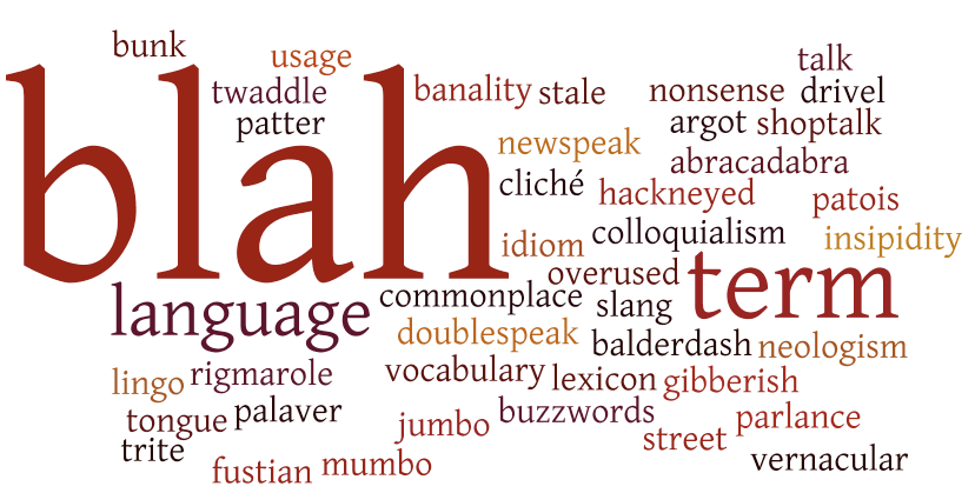Addressing your reader and potential client’s problems entails lending a listening ear and showing genuine empathy. Every problem you encounter has a human and emotional aspect that requires a proper and sensitive approach. Whether it’s a contract dispute over the interpretation of a cessation of business clause, an excused performance under a force majeure clause, or responsibility for undelivered goods, each case is a legal question to you—but never forget that it’s an emotional issue for your client. These situations call for empathy. And that means you must connect with your clients on a more personal level to address their pain points.
So even though your primary reason for writing may be for business or marketing purposes, your reader mustn't feel as if that’s the only thing you’re after. If they think that your new blog post is just an attempt to capitalize on the latest legal headline, or that your letter outlining legal options isn’t meant to improve their understanding, then you’re using the wrong approach.
More importantly, using convoluted language, winding sentences, and long, repetitive content does little to communicate with clients about solving their problems. It’s a sign you need to edit for empathy.
Why Should You Write With Empathy?
A great communicator is empathetic when expressing their thoughts. Readers can tell when you haven’t put their needs first. According to Deborah S. Bosley of The Plain Language Group, when readers seek help and are met with inapplicable babble, inscrutable sentences, and cumbersome jargon, they respond with “anger, frustration, fear, etc.”
This response is not rare. Recent research from Customer Care Measurement & Consulting revealed that almost 66% of Americans have experienced “customer rage.” This is the opposite of the response you want to achieve.
So be sensitive and remind yourself that it isn’t the time to show off your extensive legal knowledge. Don’t just write to inform or sell; write like you’re talking to a friend or family member.
Focus on how your reader might feel at the moment they read your writing. Though you might be the expert in the law, they’re the expert in their experience. Put their experience first and use empathetic writing to focus on your reader and the challenges they face instead of your own. Do it right and you can help establish your trustworthiness and professionalism.
Embrace Empathy as You Write
Empathetic writing requires you to suspend judgment and share information that your readers can understand and relate to. Review everything you’ve written and edit for empathy. Ask yourself: Does your latest blog post make your readers feel understood, and will your readers understand it?
Consider your reader’s goals and meet them halfway. Your writing should build a solid foundation in relevant legal concepts and communicate them in a way related to the problem they’re experiencing. Be patient with your reader—if they’re seeking legal help, they are probably feeling flustered and overwhelmed, so don’t add to the stress with irrelevant details and background. Shorten your sentences, use familiar words, and put the reader’s action items first. You can offer background later.
How Can You Strike an Empathetic Tone in Your Writing?
Write your content from your reader’s perspective instead. Start by identifying your target audience and creating a fictional representation of your reader. Figure out what questions your readers may have and how you can help them.
- What problems do my readers have?
- What skills does my audience possess?
- How can my writing help fill the gaps?
- Is there anything that my readers don’t understand?
How Do You Edit for Empathy?
Once you’ve defined your audience and their pain points, it’s time to revise your writing. Here’s our advice:
- Give your reader context and tell them what they must do next.
- Write in plain language and put the reader’s needs first.
- Use white space, headings, and subheadings to allow skimming before deep reading.
- Make action items, connections, and conclusions obvious.
This advice may sound familiar but keeping your content short and sweet is the key to empathetic writing. Remember: You aren’t writing for yourself; you’re writing for your reader’s benefit.
Recognize When You Need Empathy
Legal training requires you to set aside emotions and focus on logic. After years of legal education and practice, being emotionally connected gets tough.
Use the BUROC model to recognize when your readers will need a kinder, more empathetic approach.
- B is for bureaucratic. If your reader must deal with a large, faceless organization; learn new policies and procedures; or search for complex information, they’re in a bureaucratic situation. It’s your job to communicate clearly and empathetically so your reader can understand this complex information and act quickly.
- U is for unfamiliar. If your reader is in a new situation, they’ll need all the help they can get to navigate it. For example, your reader may be confronted with paperwork in a language not familiar to them—it can be a foreign language, terms of art, legalese, or business jargon. You’ll need to simplify information when explaining new concepts to the reader.
- R-O is for rights-oriented. If your reader’s rights are at risk, they could face serious repercussions. You’ll need to show your reader where to start and help them understand what’s at risk. It’s vital that you guide your reader and explain why they can’t wait for a less stressful time.
- C is for critical. If your reader’s life or livelihood is at imminent risk, then the situation is critical, and misunderstandings can lead to dire consequences. Sometimes, unexpected situations may arise, which could cloud your reader’s judgment and performance. Be patient and emphasize the importance of any time-sensitive tasks.
If any of these terms apply to your client’s case, tread carefully. Assess the situation from your reader’s perspective and tweak your writing accordingly.
Practice Writing with Empathy
We’re facing tumultuous and uncertain times, so your readers and potential clients may be frazzled, forgetful, and fearful. This calls for a greater need for kindness and empathy.
Lawyers in some practice areas may be tempted to treat current events or traumatic experiences each case as a business development opportunity, but don’t lose sight of the emotional element as you help your clients solve their problems. Commit to putting their needs first and helping them understand the situation. Practice empathy as you edit and polish your work. If you need a second set of eyes to help streamline and simplify your writing, try WordRake.
A version of this article appeared on Attorney at Work on May 6, 2020.
About the Author
Ivy B. Grey is the Chief Strategy & Growth Officer for WordRake. Prior to joining the team, she practiced bankruptcy law for ten years. In 2020, Ivy was recognized as an Influential Woman in Legal Tech by ILTA. She has also been recognized as a Fastcase 50 Honoree and included in the Women of Legal Tech list by the ABA Legal Technology Resource Center. Follow Ivy on Twitter @IvyBGrey or connect with her on LinkedIn.









